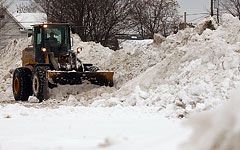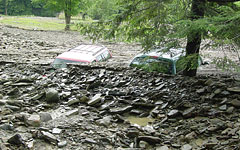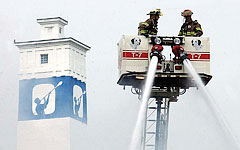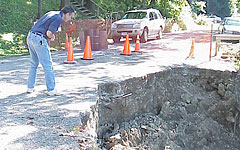 Ready Pets
Ready Pets
Pets are part of our family . . . Virtually every location on earth is vulnerable to catastrophe including us right here in. None of us are immune. It is vital that we plan ahead for our pets’ safety as well as our own. While planning may seem unnecessary now, when disaster strikes, all public resources and lines of communication become overburdened. Additionally, most disaster relief shelters for humans cannot accept pets.
Have a Safe Place to Take Your Pets
- Before an emergency strikes, contact the hotels, motels, and pet boarding facilities outside your immediate area to check for available lodging for all your pets in case of an emergency. Ask if “no pet” policies can be waived in an emergency and if you have notice of an impending disaster, call ahead for reservations.
- Ask friends and relatives outside the affected area whether they could shelter your animals.
- Ask the local animal shelter if they provide emergency shelter or foster care for pets in a disaster.
- Animal shelters may be overburdened already by the animals they currently have, so this should be a last resort.
- You may not be at home when an evacuation order comes. Find out in advance of an emergency if a trusted neighbor or friend would be willing to take your pets.
- This person should be comfortable with your pets, know where your pet supply kit is kept and have a key to your home.
- The single most important thing you can do is to take them with you when you evacuate.
Know What to do as Disaster Strikes
When you are warned of a disaster, act to protect your pets.
- Call ahead to confirm shelter arrangements for you and your pets.
- Check to see that your pet preparedness kit is accessible.
- Bring your entire companion animals inside so that they are available for transport.
- Make sure all dogs and cats are wearing secure collars with current I.D. and temporary shelter information available.
Preparedness Kits for Pets
Keep these items in an accessible place and store them in sturdy containers for transport:
- Collar and leash/harness
- Current rabies, license & I.D. tags
- A two week supply of food and water
- Non-spill food and water bowls
- Cat litter box and litter
- Portable pet carriers for each pet
- Medications and dosing instructions.
- Pet first-aid kit
- Vaccination and medical records in Zipper locked plastic bags
- Blankets
- Plastic bags for cleaning up after your pets
- Toys and treats
- Color photos of your pets
- Extra brush, collar, etc
- Non-electric can opener
If You Have to Leave a Pet at Home
(This is only as a last resort and not a substitute for evacuating! your pet!)
- Find a safe location in your house to leave your pets with access to fresh water.
- Do not choose rooms with hazards such as windows, etc.
- Never leave your pet chained during a storm.
- In case of flooding, the location should have access to high counters.
- Leave a substantial supply of dry food in a sturdy container and do not moisten it; it will turn rancid.
- Leave water in a non-spill container. If possible, open a faucet slightly and let water drip into a big container.
- Set up two separate locations if you have cats and dogs.
- Post a notice on your house indicating where you can be reached and the number of animals inside.
- Make sure your pet is wearing a leather or nylon collar with I.D. and medical tags.
- Remove choke-chain collars.






